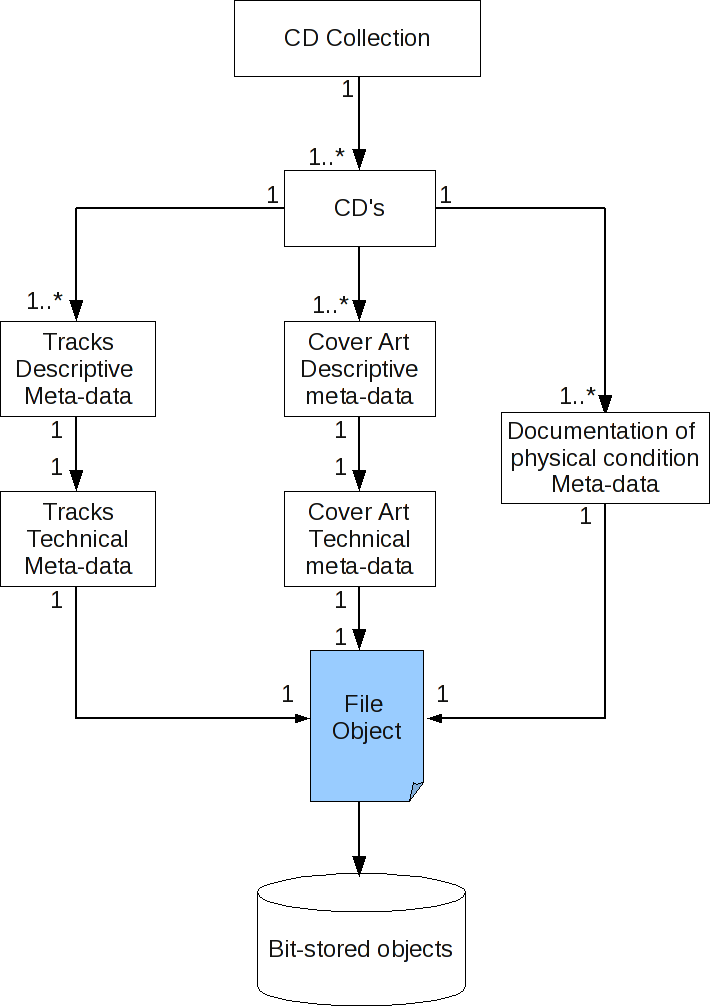|
Size: 1196
Comment:
|
← Revision 19 as of 2010-03-17 13:08:49 ⇥
Size: 1243
Comment: converted to 1.6 markup
|
| Deletions are marked like this. | Additions are marked like this. |
| Line 10: | Line 10: |
| {{attachment:CD-Collections-diagram.png}} |
|
| Line 11: | Line 13: |
| [:GuidelinesForNewDatamodel/PatternLanguage:PatternLanguage] | [[GuidelinesForNewDatamodel/PatternLanguage|PatternLanguage]] |
| Line 14: | Line 16: |
| [:GuidelinesForNewDatamodel/Collections:Collections] | [[GuidelinesForNewDatamodel/Collections|Collections]] |
Guidelines for designing a new datamodel
When designing the datamodel for a new collection to be put in the DOMS, we have to choose how many different types of objects the model should consist of. This is a tradeoff between few objects containing lots of metadata each, and in the other extreme many objects with fewer metadata on each and potentially more relations between the objects. The guidelines below were written to convey the proper balance when designing a new datamodel.
- As a rule of thumb, there should be as few objects as possible. What actually does justify the inclusion of an object is explained by the principles below.
- Introducing an object is justified if
- the object would model a concept which would be interesting to look at for the sake of the concept itself, or
- the object would model a concept for which we would need to record non-trivial metadata, or
the object would model a concept which it would be useful to be able to refer to via a relation.

Patterns for datamodels